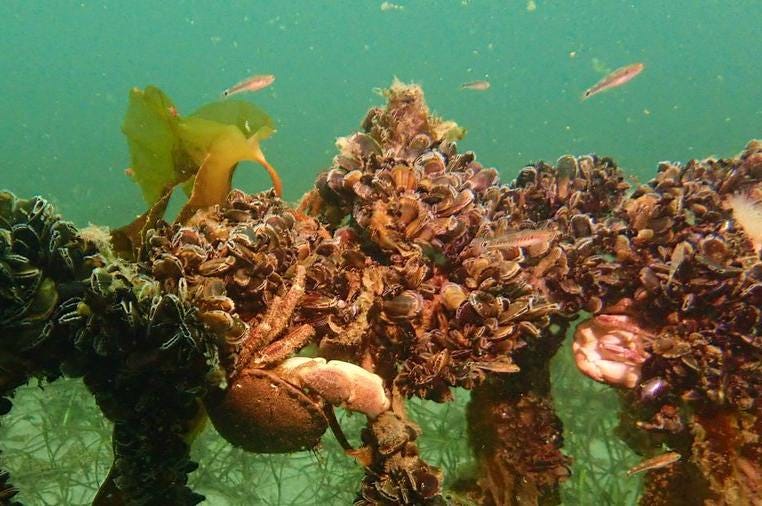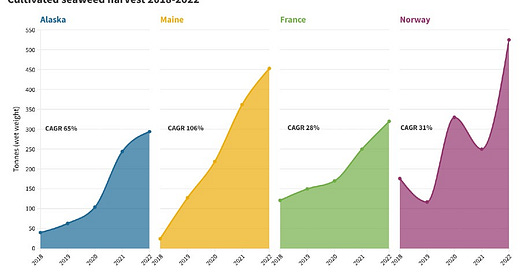2022 has come to an end, marking the second year I have been tracking the seaweed industry. I look back (and forward) in a blog post I have grandiosely titled State of the Seaweed Industry 2023 (cos, who’s stopping me?).
Some things I was interested to learn:
In the past 3 years, half of the $365 million investment tracked went into just 2 sectors: livestock methane reduction with Asparagopsis and biorefinery approaches.
Cultivation in US front-runner states Maine and Alaska is growing at a much faster pace than in leading European countries Norway and France.
Obscured by the growth of China’s harvest statistics, seaweed production has actually been in decline in most top producing countries since at least the 2010’s.
I also look at the many bottlenecks that impede the seaweed industry’s growth: what positive and negative signals could we discern in 2022? You can read the whole thing here.
Biodiversity within kelp farms - revisited
In 2021, research found that seaweed aquaculture was associated with higher abundance and species richness of wild, mobile macrofauna. In 2022, this research received pushback from several angles. What is the biodiversity value after all the seaweed is harvested? Do we really know enough to make those biodiversity claims?
Forbes et al. looked exclusively at northern hemisphere kelp farms and concluded that it currently seems unlikely that kelp farms will deliver meaningful biodiversity outcomes. Instead, they argue, we should recognise farms for providing their own valuable services and support restoration and conservation practices of kelp forests to pursue biodiversity outcomes.
As per usual, more research is recommended by the scientists, and that is happening: both Cascadia Seaweed and Seagrown are studying the biodiversity effects of their cultivation.





Hi Steven, could you provide a source link for the permitting app time in the full 2023 review article?
https://phyconomy.net/articles/2022-seaweed-review/?